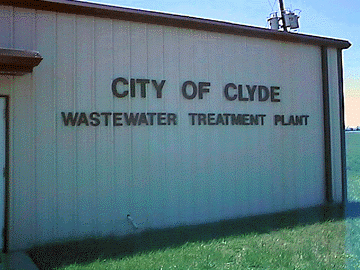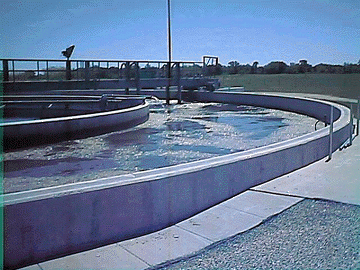Process
The Wastewater Treatment Plant uses the extended air activated sludge process for treatment. The wastewater is screened for large items, and then passed through an aerated chamber for grit and grease removal. Once the inorganic matter is removed the wastewater is aerated in the Aeration Basin to break down the organic matter into simple elements such as Nitrogen gas and Carbon. The treated wastewater then goes to a secondary clarifier. Here the activated sludge will settle out and be returned to the aeration basin to reseed the incoming raw wastewater, while the clear treated effluent water will rise and flow over the weirs for disinfection. Once the water is disinfected with ultra violet lights, the water quality set by State standards permits the release back into the environment.
Plant Staff
The plant has two full-time operators. Both are licensed by the State of Texas and receive continuing education to maintain their licenses. The two plant operators perform all functions at the treatment plant including: all operational duties, plant maintenance, building maintenance, grounds keeping, housekeeping, sludge disposal, laboratory testing, paperwork and record keeping
State Standards
The Wastewater Plant is rated by the State of Texas as a class C plant, meaning the Plant Superintendent should have a class C license or higher. The Plant Superintendent holds a class A Wastewater License while the Operator holds a class C Wastewater License. This more than meets State standards for plant staff requirements.
It is also important to know that all the water testing done at the plant is performed by State standards using the latest edition of Standard Methods: Examination of Water and Wastewater.
The State of Texas enforces these laws and standards by performing annual inspections of all Wastewater Treatment Plants in the state.
| Year Built: | 1991 |
| Plant License Rating: | Class C |
| Maximum Treatment Capacity: | .600 MGD (600,000 Gallons) |
| Average Daily Flow: | .200 MGD (600,000 Gallons) |
| Number of Tests Performed: | 3,016 annually |


